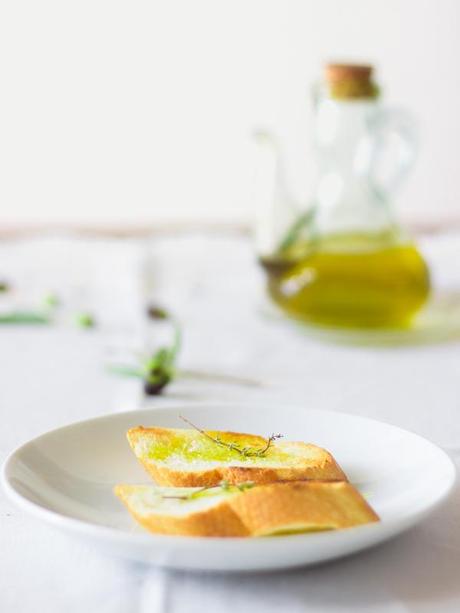
ENG | Once you already know the types of olive oil, the quality of each one and how to measure it, as I explained in the first post “How to taste an extra virgin olive oil I“, I will explain the process of tasting .
But, what does tasting mean? It is analyze by the sense organs the qualities of a product, expressing both their faults and their virtues. So that, for tasting olive oil and its “flavor” we will analyze subjecting it to our senses, especially to the taste and smell.
In this post I will define these senses, in order to we can express them in the best way possible at the time we do a tasting.
The sense of taste
The taste, as most of you know, consists of four basic tastes. We appreciate each of them in different parts of the tongue and at different times.
- Sweetness: perceived on the tip of the tongue at the first second, and then disappears gradually.
- Sourness: on the sides and base of the tongue. Is also perceived quickly but persists more than the sweetness.
- Saltiness: at the edges of the tongue. The perception time is equal to the acid.
- Bitterness: It is perceived at the end of the tongue, and is the most lasting.
However, a product may have a pure taste or a mixture thereof. There is also the hot stimulus, which is not considered as taste but is perceived all over the tongue. Or the fifth taste, umami (“delicious” in Japanese) exists in several foods, and is perceived in the center of the tongue.
Therefore, to taste an oil well, it will pass from the tip of our tongue to the palate, remembering, also, every nuance to express them later.
The sense of smell
This sense is still fairly unknown; however, when we taste a product through the smell, we will compare it with other food with some characteristic nuance.
Moreover, to taste olive oil, this sense is as important, or more, as the gustatory, because when we do movements in the mouth when we taste, causes the volatility of the aroma, although we don’t perceive this fact.
Once we already know how to express our senses and in what they are composed of, we turn to the art of tasting, which I will explain in the next post “How to taste an extra virgin olive oil III“. I hope you found it interesting.

ESP | Una vez ya podéis diferenciar los tipos de aceite de oliva, la calidad de cada uno de ellos y como se mide, como explicábamos en el primer post “Cómo catar un aceite de oliva virgen extra I”, voy a explicar el proceso de su cata.
Pero ¿qué es realmente catar? Es analizar mediante los órganos de los sentidos las cualidades de un producto, expresando tanto sus defectos como sus virtudes. De forma que, para catar el aceite de oliva y su “flavor” lo analizaremos sometiéndolo a nuestros sentidos, principalmente del gusto y el olfato.
- Flavor: sensación conjunta de sabor, aroma y textura.
En este post os definiré éstos sentidos para que podamos expresarlos de la mejor manera posible en el momento en que hagamos una cata.
El sentido del gusto
El gusto, como la mayoría ya sabéis, se compone de 4 sabores básicos. Apreciándose cada uno de ellos en diferentes puntos de la lengua y en distintos momentos.
- Dulce: se percibe en la punta de la lengua al primer segundo, luego va desapareciendo.
- Ácido: en los laterales y base de la lengua. Se percibe también rápidamente pero persiste más que el dulce.
- Salado: en los bordes de la lengua. El tiempo de percepción es igual al ácido.
- Amargo: Se percibe al final de la lengua, siendo además el que más perdura.
De manera que un producto podrá tener un sabor puro o una mezcla de ellos. Existe además el estímulo picante, que no es considerado como sabor pero es percibido en toda la lengua. O el quinto sabor, el Umami (“delicioso” en Japones) existente en varios alimentos y percibido en el centro de la lengua.
Por tanto, para catar bien un aceite, éste pasará desde la punta de nuestra lengua hasta el paladar, recordando, así mismo, todos los matices para poder expresarlos posteriormente.
El sentido del olfato
Es un sentido bastante desconocido por el momento, sin embargo, a la hora de catar un producto mediante el olfato, lo haremos comparándolo con otro alimento con matices característicos.
Por otra parte, para catar un aceite, éste sentido es tan importante o más que el gustativo, ya que cuando realizamos movimientos en la boca cuando catamos alguna sustancia, provoca la volatilidad del aroma, aunque no lleguemos a percibir realmente éste hecho.
Una vez ya sepamos expresar nuestros sentidos y saber cómo se componen, pasamos a la técnica de la cata, que explicaré en el próximo post “Cómo catar un aceite de oliva virgen extra III”. Espero que os haya parecido interesante.

